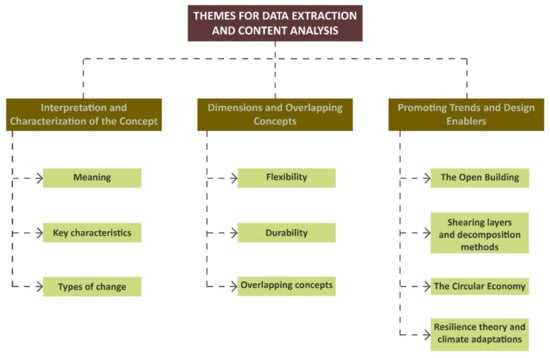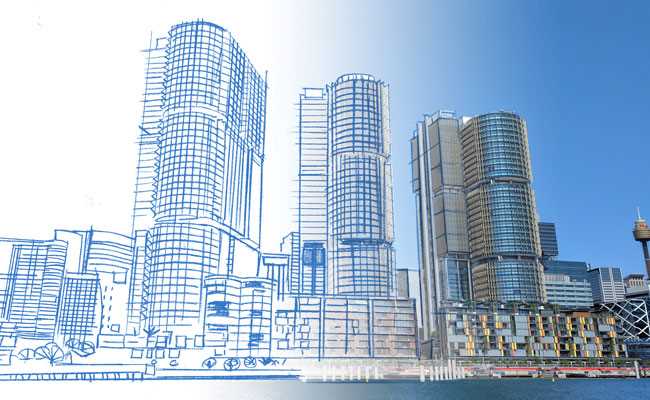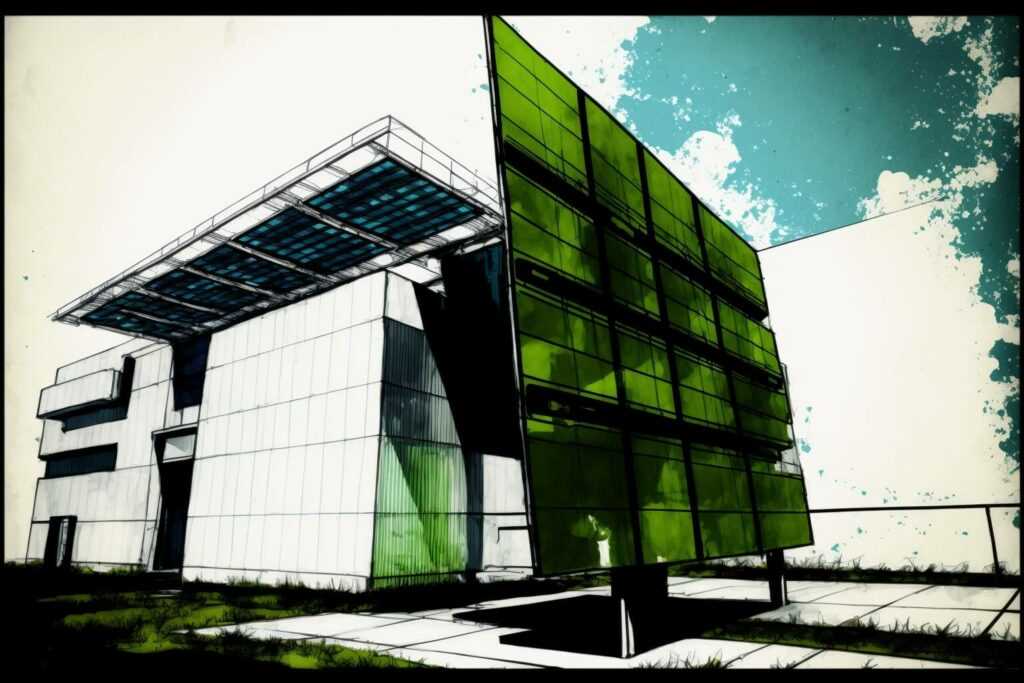
In today’s rapidly changing world, it is crucial to create buildings that can withstand the challenges of the future. Robust, sustainable, and efficient, these structures must be adaptive and flexible to meet the evolving needs of society. They need to be durable and resilient in the face of natural disasters and other unforeseen events. To achieve this, innovative approaches to construction are being developed, focusing on long-term sustainability and the ability to adapt to changing circumstances.
Resilient building is a concept that encompasses various strategies and technologies aimed at creating structures that can withstand and recover from shocks and stresses. By incorporating resilient design principles, such as the use of strong and durable materials, buildings can better withstand extreme weather events, earthquakes, and other hazardous conditions. These structures are designed to minimize damage and ensure the safety of occupants.
Furthermore, resilient buildings are also designed to be flexible and adaptable. They can easily be modified or repurposed to meet changing needs, reducing the need for costly renovations or rebuilding. This adaptability not only saves resources but also ensures that the building remains functional and relevant over time. It allows for the integration of new technologies and the implementation of sustainable practices, making the building more efficient and environmentally friendly.
Innovative construction techniques are at the forefront of resilient building. These techniques incorporate cutting-edge materials, such as advanced composites and smart materials, which offer enhanced strength and durability. Additionally, the use of digital technologies, such as Building Information Modeling (BIM), allows for more efficient planning, design, and construction processes. These technologies enable architects and engineers to create more resilient and sustainable buildings.
Designing for Resilience
Designing innovative and adaptive buildings is crucial in creating resilient and efficient structures. Resilient buildings are designed to withstand and recover from various natural and man-made hazards, ensuring the safety of occupants and minimizing damage.
When designing a resilient building, it is important to consider durability and flexibility. Durable materials and construction techniques should be utilized to ensure the longevity of the building. Additionally, flexible design elements allow for adaptation to changing needs and conditions over time.
Sustainable design practices should also be incorporated into the building design. This includes the use of energy-efficient systems, renewable materials, and sustainable construction methods. By implementing sustainable design principles, a building can reduce its environmental impact and contribute to a more sustainable future.
Furthermore, the design should prioritize the safety and well-being of its occupants. This can be achieved through the inclusion of features such as fire-resistant materials, efficient ventilation systems, and accessible design elements.
Designing for resilience requires a holistic approach, considering various factors such as location, climate, and potential hazards. By integrating innovative and resilient design strategies, buildings can better withstand and adapt to changing conditions, ensuring their long-term viability and effectiveness.
| Innovative Design | Adaptive Design | Resilient Design | Efficient Design |
|---|---|---|---|
| Utilizes cutting-edge technologies and design principles | Allows for flexibility and adaptation to changing needs | Withstands and recovers from hazards | Minimizes energy consumption and waste |
| Durable Design | Flexible Design | Sustainable Design | Safe Design |
| Utilizes durable materials and construction techniques | Allows for adaptation and modification over time | Uses renewable materials and sustainable practices | Prioritizes safety and well-being of occupants |
Sustainable Materials
When it comes to building resilient and adaptable structures, the choice of materials plays a crucial role. Sustainable materials are the cornerstone of innovative and flexible construction practices that aim to create efficient, resilient, and adaptive buildings.
Using sustainable materials in building projects not only reduces the environmental impact but also ensures the long-term durability and robustness of the structure. These materials are carefully selected to meet specific criteria, such as low carbon footprint, recyclability, and minimal use of non-renewable resources.
One example of a sustainable material is bamboo. Bamboo is a fast-growing plant that can be harvested within a few years, making it an excellent alternative to traditional wood. It is not only renewable but also incredibly strong and versatile. Bamboo can be used for various applications, including structural elements, flooring, and even as a decorative feature.
Another sustainable material commonly used in construction is recycled steel. By using recycled steel, we can reduce the demand for virgin steel production, which is a highly energy-intensive process. Recycled steel maintains the same strength and durability as virgin steel, making it a reliable choice for structural components.
Additionally, sustainable concrete, also known as green concrete, is gaining popularity in the construction industry. Green concrete incorporates recycled materials, such as fly ash and slag, into the mix, reducing the need for cement production. This not only decreases carbon emissions but also enhances the overall durability and performance of the concrete.
Furthermore, sustainable insulation materials, such as cellulose and sheep’s wool, provide excellent thermal performance while minimizing the use of harmful chemicals. These materials are not only energy-efficient but also renewable and biodegradable, making them ideal choices for creating resilient and environmentally friendly buildings.
| Sustainable Materials | Advantages |
|---|---|
| Bamboo | Renewable, strong, versatile |
| Recycled steel | Reduces energy demand, maintains strength |
| Green concrete | Decreases carbon emissions, enhances durability |
| Cellulose and sheep’s wool insulation | Energy-efficient, renewable, biodegradable |
In conclusion, the use of sustainable materials in building construction is essential for creating resilient, efficient, and adaptable structures. By choosing innovative and flexible materials, we can reduce our environmental impact while ensuring the long-term durability and robustness of our buildings.
Robust Structural Design
A durable and innovative building design is essential for creating structures that can withstand various challenges and adapt to changing needs. A robust structural design ensures that a building is flexible, adaptive, efficient, and sustainable.
Robust structural design involves the use of high-quality materials and construction techniques that enhance the durability and longevity of a building. This includes the selection of materials that can withstand environmental factors such as extreme weather conditions, seismic activities, and fire hazards.
Additionally, a robust structural design allows for flexibility and adaptability in the building’s layout and function. This means that the building can be easily modified or repurposed to accommodate different uses or changing needs over time. This flexibility ensures that the building remains functional and relevant for years to come.
In terms of efficiency, a robust structural design focuses on optimizing energy usage and reducing waste. This includes the incorporation of energy-efficient systems and technologies, such as insulation, efficient HVAC systems, and renewable energy sources. By maximizing energy efficiency, a building can minimize its environmental impact and operating costs.
Furthermore, a sustainable approach to structural design considers the lifecycle of the building and its impact on the environment. This includes the use of environmentally friendly materials, efficient construction practices, and the incorporation of green spaces and natural elements. By prioritizing sustainability, a building can contribute to the overall well-being of its occupants and the surrounding community.
| Key Features of Robust Structural Design |
|---|
| Durable materials |
| Flexibility and adaptability |
| Efficient energy usage |
| Sustainable construction practices |
In conclusion, a robust structural design is crucial for creating durable, innovative, and sustainable buildings. By incorporating flexibility, adaptability, efficiency, and sustainability, a building can withstand challenges and meet the changing needs of its occupants and the environment.
Climate-Responsive Architecture
Climate-responsive architecture is an innovative approach to building design that aims to create efficient, resilient, and adaptable structures. By considering the local climate and environmental conditions, architects can develop buildings that are better equipped to withstand the challenges posed by changing weather patterns and natural disasters.
One key aspect of climate-responsive architecture is the use of sustainable and durable materials. By selecting materials that have a low environmental impact and can withstand harsh conditions, buildings can be more robust and long-lasting. This not only reduces the need for frequent repairs and replacements but also minimizes the overall carbon footprint of the structure.
Another important element of climate-responsive architecture is the integration of adaptive design strategies. This involves incorporating features that can be adjusted or modified to respond to changing climatic conditions. For example, buildings can be designed with adjustable shading systems to control sunlight and heat gain, or with flexible floor plans that can be easily reconfigured to meet changing needs.
Climate-responsive architecture also emphasizes the importance of energy efficiency. By incorporating passive design strategies such as natural ventilation, daylighting, and insulation, buildings can reduce their reliance on mechanical systems for heating, cooling, and lighting. This not only reduces energy consumption and operating costs but also makes the building more resilient in the event of power outages or disruptions.
Furthermore, climate-responsive architecture encourages the use of innovative technologies and systems. For example, buildings can be equipped with rainwater harvesting systems to reduce water consumption and reliance on external sources. Similarly, the use of renewable energy sources such as solar panels or geothermal systems can help buildings become more self-sufficient and less dependent on traditional energy grids.
| Key Principles of Climate-Responsive Architecture |
|---|
| 1. Sustainable and durable materials |
| 2. Adaptive design strategies |
| 3. Energy efficiency |
| 4. Innovative technologies and systems |
In conclusion, climate-responsive architecture is a holistic approach to building design that combines efficient, resilient, adaptive, innovative, and sustainable principles. By considering the local climate and environmental conditions, architects can create structures that are not only durable but also capable of adapting to changing needs and circumstances.
Enhancing Structural Integrity

Efficient and resilient building structures are essential for withstanding the various challenges faced in today’s rapidly changing world. To ensure the longevity and durability of a building, it is crucial to enhance its structural integrity through innovative and adaptive design strategies.
A flexible and robust design allows a building to adapt to changing environmental conditions, such as earthquakes, hurricanes, and extreme temperatures. By incorporating sustainable materials and construction techniques, the structural integrity of a building can be significantly improved.
One way to enhance structural integrity is through the use of advanced materials, such as carbon fiber reinforced polymers (CFRP). CFRP is a lightweight and high-strength material that can be used to strengthen existing structures or reinforce new ones. Its innovative properties make it an ideal choice for enhancing the resilience of buildings.
Another approach is to implement adaptive design strategies that allow a building to adjust to changing needs and requirements. This can include modular construction techniques, which enable easy modifications and additions to the building without compromising its structural integrity.
Furthermore, incorporating smart technologies and sensors into the building design can help monitor and detect any potential structural issues in real-time. This proactive approach allows for timely maintenance and repairs, ensuring the long-term durability of the building.
In conclusion, enhancing the structural integrity of a building is crucial for creating efficient, resilient, and sustainable structures. By incorporating flexible, robust, and innovative design strategies, along with the use of advanced materials and smart technologies, buildings can be constructed to withstand the challenges of the modern world.
Reinforced Concrete

Reinforced concrete is a robust and flexible building material that has revolutionized the construction industry. It is an efficient and resilient solution for creating structures that can withstand various environmental and structural challenges.
The innovative use of reinforced concrete allows for the creation of adaptive and sustainable buildings. It provides the necessary strength and durability to withstand earthquakes, hurricanes, and other natural disasters. The flexibility of reinforced concrete also allows for creative and unique architectural designs.
Reinforced concrete is made by combining concrete with steel reinforcement, creating a composite material that is stronger and more durable than traditional concrete. This combination of materials allows for the redistribution of stress and load-bearing capacity, making it an ideal choice for constructing buildings and infrastructure.
Moreover, reinforced concrete is a sustainable building material. The production of concrete requires fewer raw materials compared to other construction materials, making it an environmentally friendly choice. Additionally, the long lifespan of reinforced concrete structures reduces the need for frequent renovations and replacements, further reducing the environmental impact.
In conclusion, reinforced concrete is an innovative and adaptable building material that offers a range of benefits. Its robustness, flexibility, efficiency, and resilience make it an ideal choice for constructing durable and sustainable structures.
Steel Framing
Steel framing is a building technique that has gained popularity in recent years due to its numerous benefits. Steel is a durable and robust material that can withstand extreme weather conditions and natural disasters. It is also flexible and can be easily modified or expanded to accommodate changing needs.
One of the key advantages of steel framing is its resilience. Steel structures are able to withstand high winds, earthquakes, and other external forces, making them an ideal choice for areas prone to such hazards. This resilience not only ensures the safety of the building and its occupants but also reduces the need for frequent repairs and maintenance.
Additionally, steel framing is highly adaptive. It can be easily modified or reconfigured to accommodate different layouts or uses. This flexibility allows buildings to be repurposed or expanded as needed, without the need for major structural changes. This makes steel framing an innovative and efficient choice for both residential and commercial construction projects.
Furthermore, steel framing is an environmentally friendly option. Steel is a recyclable material, which means that it can be reused or repurposed at the end of its life cycle. This reduces waste and minimizes the environmental impact of the construction process. Additionally, steel structures can be designed to be energy-efficient, further reducing their carbon footprint.
In conclusion, steel framing offers numerous advantages for building construction. Its durability, resilience, adaptability, and efficiency make it a popular choice among architects and builders. Whether it’s for residential, commercial, or industrial projects, steel framing provides a strong and reliable foundation for the built environment.

I am Patrina de Silva, a psychologist and mental health blogger in Sri Lanka. After obtaining psychology degrees from the University of Colombo and Monash University, I returned home to work as a counselor while also starting the popular blog “Pressy but Happy” to provide advice on psychological issues. Over the past decade, my empathetic articles have made my blog a leading mental health resource in the country. In addition to writing, I maintain a private therapy practice, frequently volunteer counseling time, and conduct seminars, driven by my passion for destigmatizing mental illness and educating the public on the mind-body connection. I strive to be an influential voice in my field through my compassionate approach.
